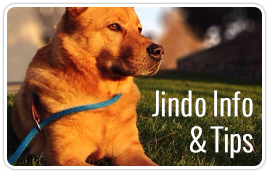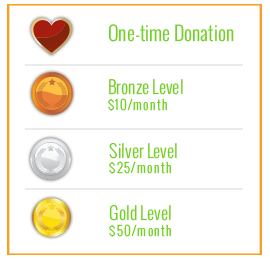Have you just added or are planning to add a new family member? Congrats!
If this is all new to you or if it’s been a while, here’s a helpful list of supplies you can buy prior to bringing home your new best friend. Best of all, by buying online you can save money AND benefit our rescue, helping us to save even more dogs. Each purchase made through any of our links below sends a percentage back to our rescue.
We highly recommend Amazon if purchasing online, as their service has been fast and helpful.
1. Food supplies
-
- Food and Water Bowls – We recommend around a 7-10″ bowl for both food and water, depending on how many dogs are in your household. We find that an 8″ bowl refilled three times is a great size for a two dog household. You may find you prefer ceramic or metal bowls.We generally recommend separate bowls instead of ones that come in a permanent installation of two since you will be washing the food bowl much more often than the water bowl. It also allows you to place the bowls in the dishwasher for disinfecting.
- Dog Food – Depending on the size of your jindo, he/she may be eating around 2 cups a day of food. We like to give half of that ration in the morning and half in the evening. This allows your dog to have a little bit of food in their stomachs, avoiding any throwing up of bile (a yellow/green liquid that breaks down the food in their stomachs) – something we see with the more active dogs.Jindos tend to do better on a wheat and corn free dog food option, and some Jindos may have food allergies. All of our foster dogs receive wheat/corn free premium kibble and we highly encourage our adopters to fully research what foods are out there on websites like Dog Food Advisor. We’re happy to make recommendations regarding a specific food, contact us to chat about it.
Our adopters tend to choose between premium grain free kibble, dehydrated raw food such as The Honest Kitchen, freeze dried raw food such as Stella & Chewy’s, or preparing homemade food.
If you do choose to make homemade food, we highly encourage you to ask your vet for a referral to a pet nutritionist and to ensure that you provide adequate amounts of vitamins and minerals to your pet. A supplement such as Balance-It can be used to ensure that your pet receives all the necessary nutrients.
2. Bedding
- Pet Bed – Your jindo may choose not to use a bed in the first little while or if it’s particularily warm outside. Don’t worry and this may change. You can try folding a quilt or blanket in fourths and trying this out first, before purchasing an expensive bed.
- Crate – We highly recommend crate training your jindo for their safety and that of your home. Once you have determined that you jindo can safely roam around the house in your absence, you can keep the crate as a soothing safe place for your jindo to retire at night or when things get stressful in the house (when new visitors come over). As well, most evacuation shelters and/or hotels/motels require that pets be crated so having your pets crate-trained will make any emergency situation or vacation that much less stressful.Many of the jindos seem to enjoy the plastic-type airline crates to the jangly metal crates. We highly recommend the Petmate Vari Kennel Ultra, which you can find on Amazon and other major pet stores.
3. Leashes and Collars
- Regular leash – we recommend a high quality leash so as to prevent any accidents where the leash breaks near traffic. We’ve seen it happen and it only takes a few more dollars to ensure a quality leash. Any of these basic leashes are a good choice, we do NOT recommend retractable leashes for any purpose.
- Hands-free Leash – we enjoy some of the hands-free leashes available that have a “traffic” handle closer to the dog. This allows you to go hands-free on hikes and still grab the leash when you cross streets or get near the car. This Ruffwear Flat Out leash has been very comfortable. We’ve also happily used this Stunt Puppy leash.
- Collars – Fit is as important as construction, we recommend that the collar be tight enough so that you can only place two fingers under the collar. As well, you should not be able to pull it over the dogs head when secure. Whether you choose to add any other type of training collar for walking, a dog should always have a basic flat collar on with ID tags attached.
-Depending on the size of your jindo, the collar you order should fit anywhere from 10″ to 18″. 10″ may fit a smaller jindo in the 20 lb range, while most jindos fit collars in the 14-16″ range. A particularly large mix dog of about 70-80 lbs may fit in the 18-22″ range. - ID Tags – Order your tags at the same time as your collar so that you have it on hand when picking up your dog. We generally supply a collar and leash, with the collar sporting a Two Dog Farms ID tag. Your dog can wear this tag while you arrange to have one made with your own contact info. We recommend including at least two contact phone numbers.
- Harnesses – Jindos are escape artists and harnesses are not necessarily fool proof or escape proof. Your dog may be a flight risk for the first little while, so you may also want to use a slip lead in addition to a harness or flat collar/leash combo. We are HUGE fans of the Ruffwear Webmaster harness for being the most escape resistant option out there.
- GPS Collar – We highly recommend the Findster GPS Collar system.
4. Toys and Misc
Your new best friend will want something to play with, other than you, especially while you’re out and about. We love the Kong brand toys and their stuffings are easy to use for new dog parents. You can start experimenting with other stuffings once things settle down at home. Once you’re up to homemade stuffings, the jindos tend to enjoy yogurt, peanut butter, and pureed pumpkin. We tend to layer these with treats and freeze them, which should buy you at least 45 minutes to an hour of focused enjoyment!
Congratulations on your new best friend! If you have questions, we would love to assist you at info@twodogfarms.com.
5. Health
Pet Insurance – It’s best to be prepared right away for any health issues or emergencies that come up. If you’re prepared, the situation will be much less stressful for everyone and could be much less expensive for you.
We highly, highly recommend purchasing pet insurance for your new dog. Purchasing it right away ensures that any conditions that come up during your ownership will be covered and not fall under a pre-existing condition. We have personally used and love Healthy Paws Pet Insurance. It is high rated, is cost effective for the monthly fee and covers alternative therapies ad medication. They keep costs down because the vet visit fee (typically $50-100) is not included, which keeps folks from running up their bills. While we do receive a referral fee for using the link below, we would recommend this insurance even if we did not. For us, it’s like having car insurance. You really hope that don’t have to use it but it’s a lifesaver in catastropic situations.
Keep in mind that you will still need to budget for yearly checkups, flea medications, vaccinations and any other routine vet expenses for your dog. If you put aside a certain amount each month, it makes it much easier to budget these expenses. We also recommend that you keep a credit card with a balance available for any vet expenses, as it may take a couple weeks to be reimbursed by pet insurance.
First Aid Kit – While we recommend that you keep your local 24 hr vet office on speed dial and call your vet in case of emergency, it’s vital to have some essentials on hand. Discuss these with your vet ahead of time so that they can counsel you and also demonstrate their use.
-
- First Aid book
- Wound Spray – we are all huge fans of Vetericyn. We cannot confirm or deny we may have used it on the humans, too. 😉
- Hydrogen Peroxide – an essential for inducing vomiting, check with your vet first to ensure it’s something safe to vomit back up
- Betadine – perfect in the liquid/spray/ointment for disinfection of minor wounds/cuts etc. A personal favorite at TDF HQ on the farm!
- Syringe – for administering the above Hydrogen Peroxide
- Bandage Tape – This is the self-adhering bandage tape you’ve seen them use at the vet. It doesn’t stick to fur, and can also be used to fashion a muzzle if your dog is very injured and scared. It allows you to safely transport your dog to the vet without any bite incidents.
- Gas-X – Discuss with your vet. In case of deadly bloat, this may buy you time to get to an emergency vet.












